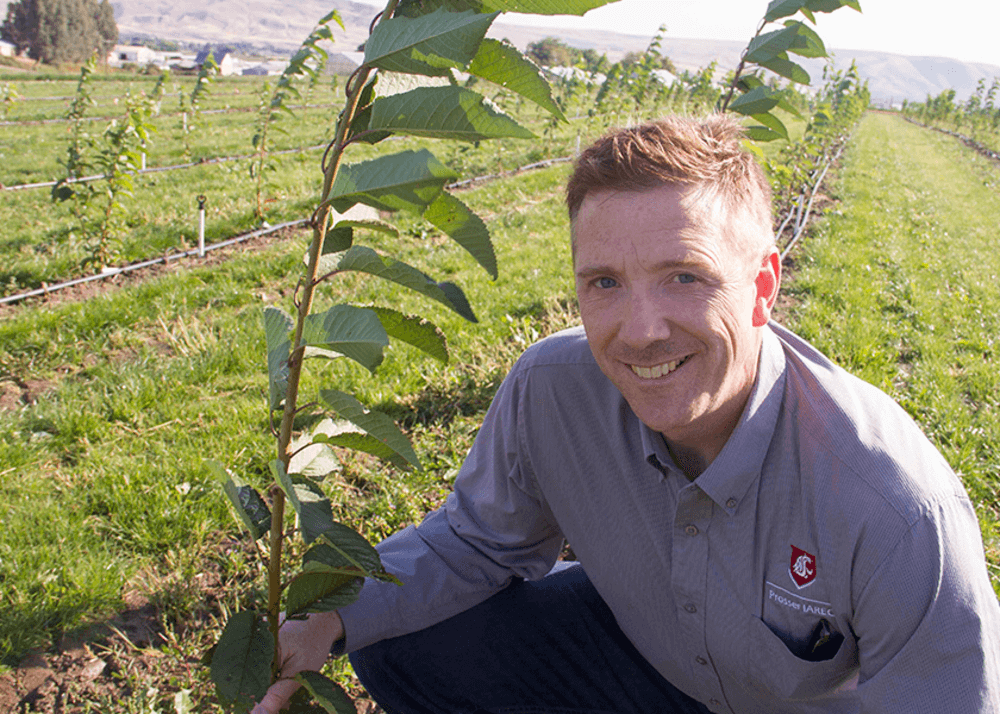Researchers in Prosser, Washington are installing electrical sensors in the soil, burying a camera for the roots, and uprooting entire cherry trees to study how and when nutrients move within them.
The goal is precision nutrient management, providing only what the tree needs when it needs it, stated Bernardita Sallato, a tree fruit specialist at the Washington State University at the Irrigated Agriculture Research and Extension Center in Prosser.
Sallato is the lead researcher on a three-year project funded with $111,000 from the Washington Tree Fruit Research Commission.
Traditionally, cherry growers in the Pacific Northwest have fertilized based on soil analyses and tissue tests, but now they are using tests based on standards developed for independent trees with older, more vigorous rootstocks, Sallato said. This helps growers determine whether their trees are sufficient or deficient in nutrients at a given time, but it does not reflect the evolving demand.
Growers need to know specifically when their trees need certain nutrients and how different rootstocks and training systems can affect these needs, Sallato said. Otherwise, they waste fertilizers and increase the risk of nitrate leaching below the roots and into groundwater, a problem that will become increasingly important as the tree industry begins to pursue carbon credits and other sustainability certifications.
Research conducted on apples has shown how different rootstocks influence root growth timings and nutrient uptake, but these issues have not been explored as well for sweet cherries.
Knowing more about when trees most efficiently absorb nutrients would help growers apply fertilizers at the right time. Sallato’s work can help understand why nutrients can be abundant in the soil but not in the tree or, most importantly, in the fruit.
“We’re still shooting in the dark,” said grower Denny Hayden, a member of the cherry committee of the research commission and a collaborator on Sallato’s project.
Apple and cherry growers often fertilize with foliar sprays of certain nutrients, especially calcium, at pre-determined times of the year. Sallato has long questioned the usefulness of these sprays, but her research could shed light on this practice, Hayden said. The precision of soil application could help reduce the need for more expensive foliar sprays.
Sallato and her team have initiated several trials to answer these questions.
In one study, they are cutting, uprooting, and chipping entire cherry trees to study biomass and nutrient distribution - where nutrients are stored within the tree’s tissues - across three different rootstocks, training systems, and tree ages.
Additionally, Sallato is comparing three techniques for monitoring root growth from bloom to leaf fall. One involves root windows, or pits, dug into the ground and lined with transparent plexiglass to allow visual inspection of the roots. Another is a mini rhizotron, a specialized camera - a CI-600 In-Situ Root Imager from CID Bio-Science, to be exact - inserted into a plexiglass tube.
The third involves placing electrical resistivity tomography sensors on the soil beneath the trees and using electric current to map subsurface variations and visualize root structures of plants and their interactions with soil roots. The sensors will be monitored by collaborators at the Pacific Northwest National Laboratory in Richland.
To measure nutrient availability and leaching, researchers track nutrient levels in the soil at three depths and five points during the season.
After a year of trials, Sallato has determined the following:
- Vigorous Mazzard rootstocks led to a greater share of biomass in both fine and coarse roots compared to the earlier Gisela 6 and Gisela 12 rootstocks.
- Root growth for all rootstocks began about a month after full bloom when soil temperature reached 70 degrees.
- Trees on Gisela rootstock had a second, small root growth in mid-September, giving growers an additional opportunity, for a month, to efficiently absorb nutrients.
- Nitrate levels in sites with mature trees were normal, with the highest levels in the top 8 inches of soil and levels decreasing with depth. This suggests that leaching from June to September is minimal or non-existent.
California researchers have conducted similar work, also hoping to develop precision nutrient applications and to appease regulatory authorities concerned about nutrient pollution.
Read the full article: Good Fruit Grower
Image: Good Fruit Grower
Cherry Times - All rights reserved










